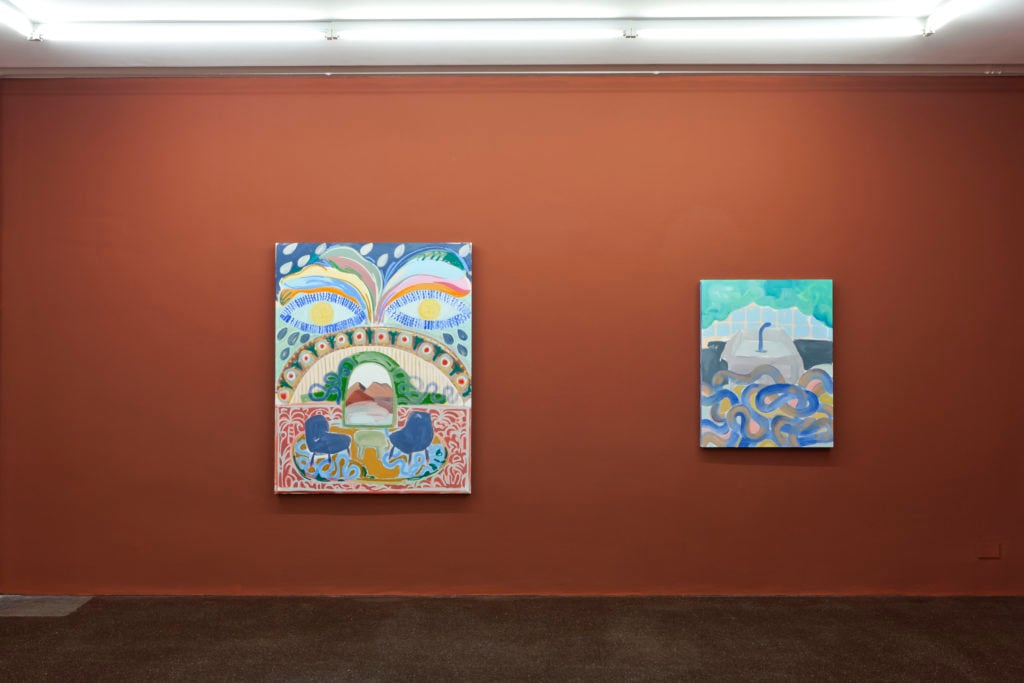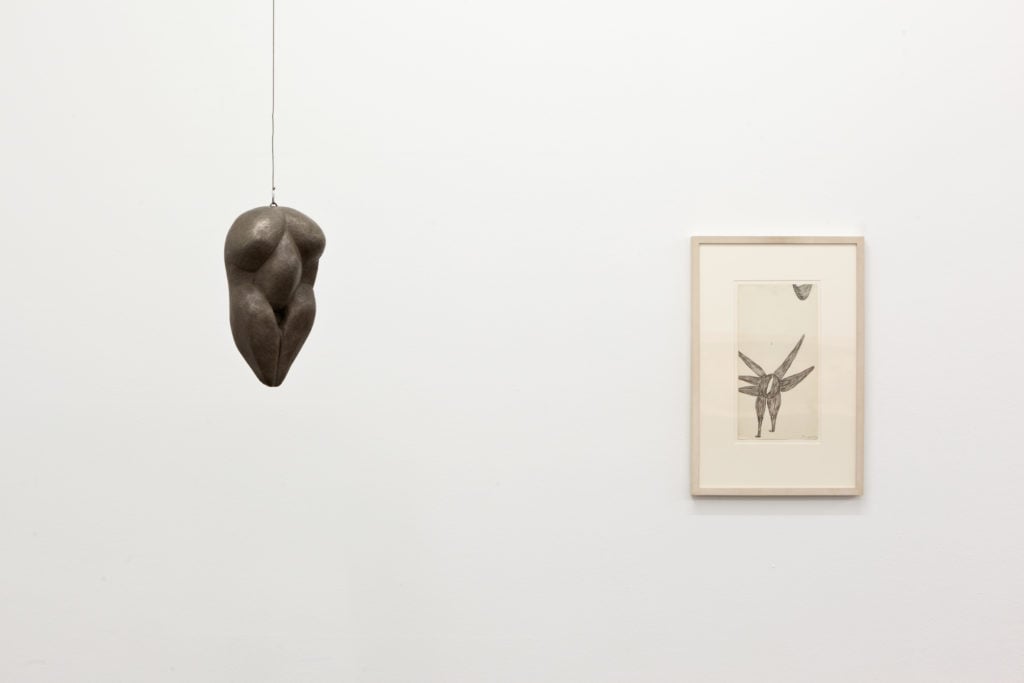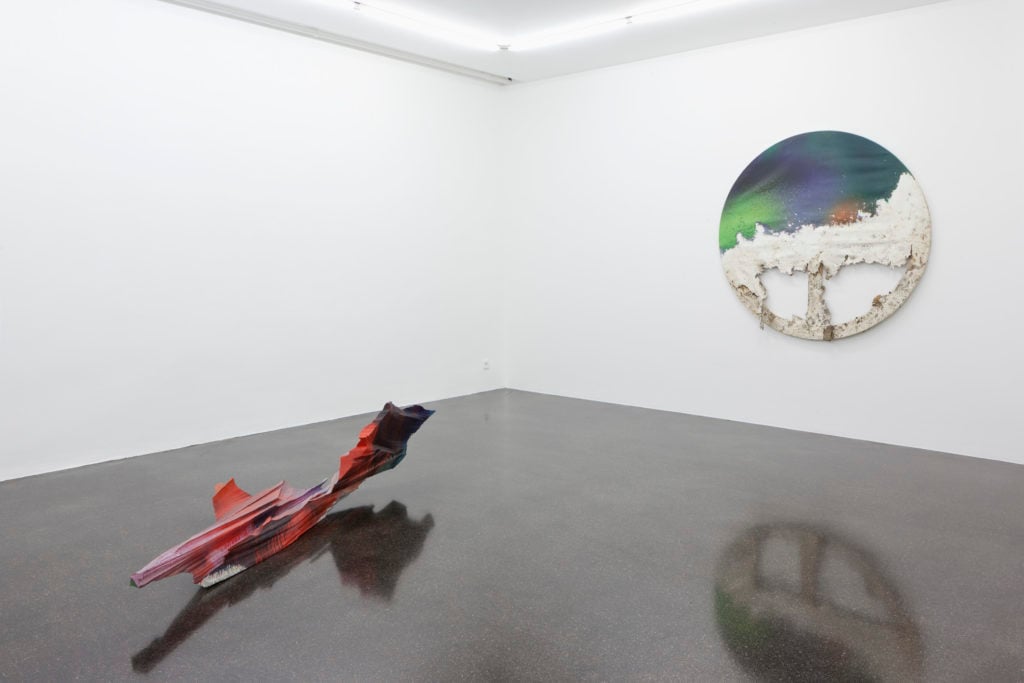Galleries
32 Years After Opening a Gallery to Show Female Artists, the Veteran Art Dealer Barbara Gross Reflects on How the Market Has—and Hasn’t—Changed
The modest and erudite dealer looks back as she prepares to close her gallery for good.

The modest and erudite dealer looks back as she prepares to close her gallery for good.

Kate Brown

The German art world was surprised when stalwart gallerist Barbara Gross announced last week she would be closing her gallery after more than three decades in the business. But the veteran Munich-based dealer, who was an early champion of female artists, has decided to end on a high note.
“It had nothing to do with economics, it was more that I realized that I had to slow down,” Gross tells Artnet News. She acknowledges that juggling her gallery program with art fairs has been a challenge, which many founder-directors of ambitious smaller galleries will recognize. “I never had someone who could just take up going to a fair instead of me and make sure that it works,” she says.
For the past three decades, Gross has represented or collaborated with many great female artists, including VALIE EXPORT and Miriam Cahn as well as the late Maria Lassnig, Louise Bourgeois, and Nancy Spero. Back in 1988, when Gross opened her gallery, art stars were predominantly male, especially in Germany. And while gender equality is still a long way off today, many important female artists at the time were relatively unknown and their works were even more undervalued than they are now.
Though Gross’s gallery has always been a small operation, her shows were well-respected and influential curators, including Hans Ulrich-Obrist and the late Okwui Enwezor, have been speakers at her openings.
Gross decided to shutter her gallery in the fall of last year. Announcing it last week amid Germany’s lockdown was coincidental, but still painful: She was forced to shutter her final show early, an exhibition juxtaposing the works of Silvia Bächli and the late Marthe Wéry.

Sol Calero Pasaje del olvido (2019). Installation view, Barbara Gross Galerie. Photo: Wilfried Petzi
Still, Goss knows first-hand what it takes to weather tough times. She survived the global recession in 2008, and German’s economic downturn in 2003. “One has to reduce in moments like that, and no one will get the money they are looking for,” Gross says.
Asked about what she would advise dealers in the current crisis, Gross recommends thinking about the big picture. “It is a good time to rethink what one wants with their gallery,” she says, adding that dealers need to find out who is really interested in their artists, and focus on selling substantial works by them. “In difficult times, you need to be more specific [with your offers to collectors],” she says.
Gross opened her gallery after studying art history and being active in the women’s movement. Frustrated by the underrepresentation of female artists in museums, she launched her program in 1988 with only women artists, focusing on producing editions with Austrian artists VALIE EXPORT and Lassnig, among others. Her first group show included Hannah Collins, Katharina Sieverding, and Nancy Spero, some of whom she gave their German debut.
While it was not uncommon to see female gallerists at the time (there was Monika Sprüth and Philomene Magers in Germany, Maureen Paley and Victoria Miro in London, and Marian Goodman in New York, to name a few) it was unusual for a dealer, male or female, to organize a program centered entirely on women.

Louise Bourgeois Another Normal Love. Installation view, Barbara Gross Galerie, 2015. Photo Wilfried Petzi, © The Easton Foundation
Museum-rich Munich provided fertile ground for her program—once she managed to convince its institutions that female artists’ paintings, such as Lassnig’s highly personal portraits, belonged there. “People in Germany hated her,” recalls Gross of Lassnig. “They would say: ‘She’s hysterical; she’s narcissistic.'”
But Gross says she quickly realized working with only women would not be financially sustainable. “I needed to work with male artists because one must make a balance, but also show that women are equal to men.” When she started expanding her program, she recalls there was not much of a reaction among fellow dealers. “Many seemed to have thought that I was not competition because I was only showing women artists,” she recalls. But, she says, it was hard to find male artists to include in her program that had “personalities and reputations like Ida Applebroog or Nancy Spero.”
Prices for female artists started to change in the early 1990s, Gross noticed. But that does not mean that her gallery scaled up; rather, Gross always kept her gallery a manageable size. “I was always careful and modest in the gallery operations,” she says. It was not always smooth sailing, however. “The gallery didn’t make money all the time… There were moments throughout the years where I wondered if I would have to close.”

Katharina Grosse. Installation view Barbara Gross Galerie, 2016. Photo: Wilfried Petzi.
She credits her gallery’s modest size and overhead, and her sense of caution, for surviving major economic hiccups. “You have to slow down and concentrate on what you can do and what is essential,” she says. The 2008 crisis was not really a problem for her gallery, though she said sales took longer than before. “We were about to sell a painting by Leon Golub to an American collector when the crash hit,” she says. “The collector pulled out because he was bankrupt. So I waited three months, and then I decided to reduce the price a bit.” Within a few months, the collector’s finances had improved. “By the end of that year, the collector changed his mind,” she recalls. She says that recessions are often marked by collectors, rather than galleries, dictating prices.
Gross attended Art Cologne, Art Basel, and other fairs like the now-defunct Art Berlin with limited success. “My experience was also that only certain things would sell at fairs. For example, one year we brought Eva Hesse to Art Cologne, and we did not sell. But I could sell it to the Pompidou and other museums. It was for many of my artists like that, including Nancy Spero and Boris Mikhailov.”
Looking ahead, she still plans to work with her artists in an advisory capacity. “I had the feeling that it was time, and I was just waiting for the right moment. I did not want anyone to see me slowing down, or getting boring,” she says of taking the decision to close. “I don’t want to wait until it’s necessary.”